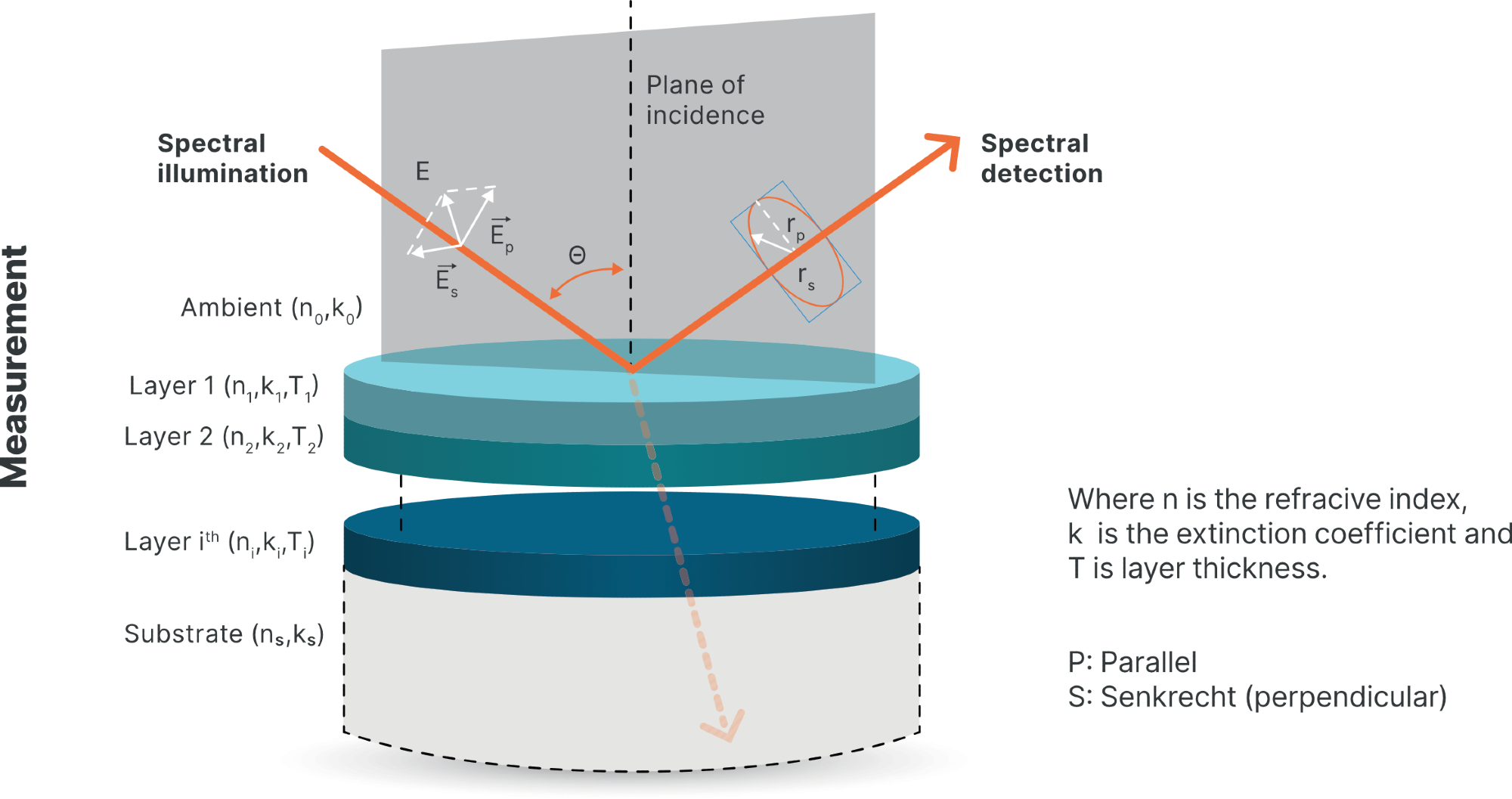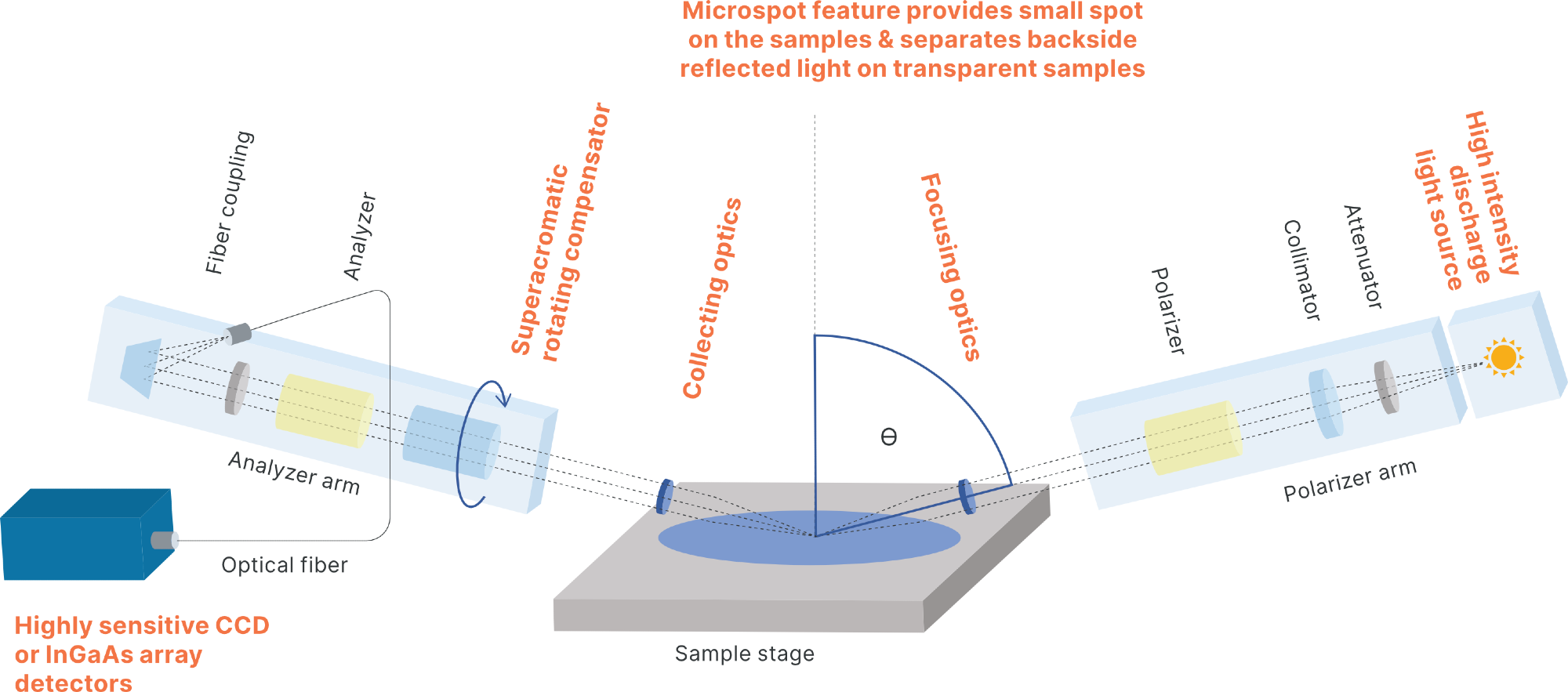Ellipsometry is a total optical measurement technique. This method is employed to measure how the polarization of light changes when passing through a medium. The polarized light shows distortion because of the layer structure during reflection, which enables the user to extract the material properties of the medium in this structure.
The distorted polarization can be determined via numerous methods in which different optical components modulate the light polarization.
Semilab uses the most advanced rotating compensator layout, in which a high-end, broadband compensator introduces variable phase shift that is dependent on the rotation angle to spectrally determine the ellipsometric elements.
In order to extract the thickness and the refractive indices values, modeling and parameter fitting for the actual structure are needed, this is because ellipsometry is indirect metrology.
Semilab's Spectroscopic Ellipsometry Analyzer (SEA) software offers a large variety of methods to create models for the actual structures and powerful algorithms to fit the model parameters to gather the required values.

Image Credit: Semilab Semiconductor Physics Laboratory
The Spectroscopic Ellipsometry measurement method has many advantages. It is an optical technique, meaning it is non-destructive and non-contact. The thickness and optical functions of each layer can be calculated by utilizing a multilayer structure.
This technique is based on measuring the phase shift of a light beam which travels through a layer structure so that it has high sensitivity, and the phase angle measurement is not dependent on the absolute intensity of light. By using white light sources and monochromators spectral information about the sample can be gathered.
Ellipsometry is used to measure the ratio of the complex Fresnel reflection coefficients. It can be divided to an amplitude term as it is a complex number, and a phase shift term, which corresponds to the ellipsometric angles, Ψ and Δ.
These parameters have the physical properties of the layer structure, like the refractive index and layer thickness.
This is a highly nonlinear and transcendental equation, so it must be solved by utilizing numerical methods on a model-based approach.
Throughout this procedure, the layer structure is considered with thickness and optical functions in the model. The relative phase shift is established and compared to measured quantities in a numerical regression procedure.

Image Credit: Semilab Semiconductor Physics Laboratory
Features
Non-destructive and non-contact and optical measurements can be performed on:
- Obtained parameters: thin film thickness and optical properties
- Substrates
- Multi-layer samples
- Single layer
Applications
- Optics
- Lighting
- Porous layer
- Semiconductor
- Photovoltaics
- Bio
- Organic
- Laser diode
Measurement Modes
- Porosimetry: Measurements of pore size and porosity in thin films
- Polarimetry
- Transmission Ellipsometry for transparent substrates
- Generalized Ellipsometry for Anisotropic materials
- Spectroscopic Ellipsometry for thin film thickness and optical functions, including complex multilayer structures
- Mueller Matrix (11 or 16 elements) uniquely provided in combination with Scatterometry for 3D anisotropic materials
- Jones Matrix for simple anisotropic materials
- Reflectance & Transmittance vs. wavelength and incidence angle
- Scatterometry vs. wavelength and angle of incidence
- In-situ measurement mode for real time control during deposition or etch process

This information has been sourced, reviewed and adapted from materials provided by Semilab Semiconductor Physics Laboratory.
For more information on this source, please visit Semilab Semiconductor Physics Laboratory.